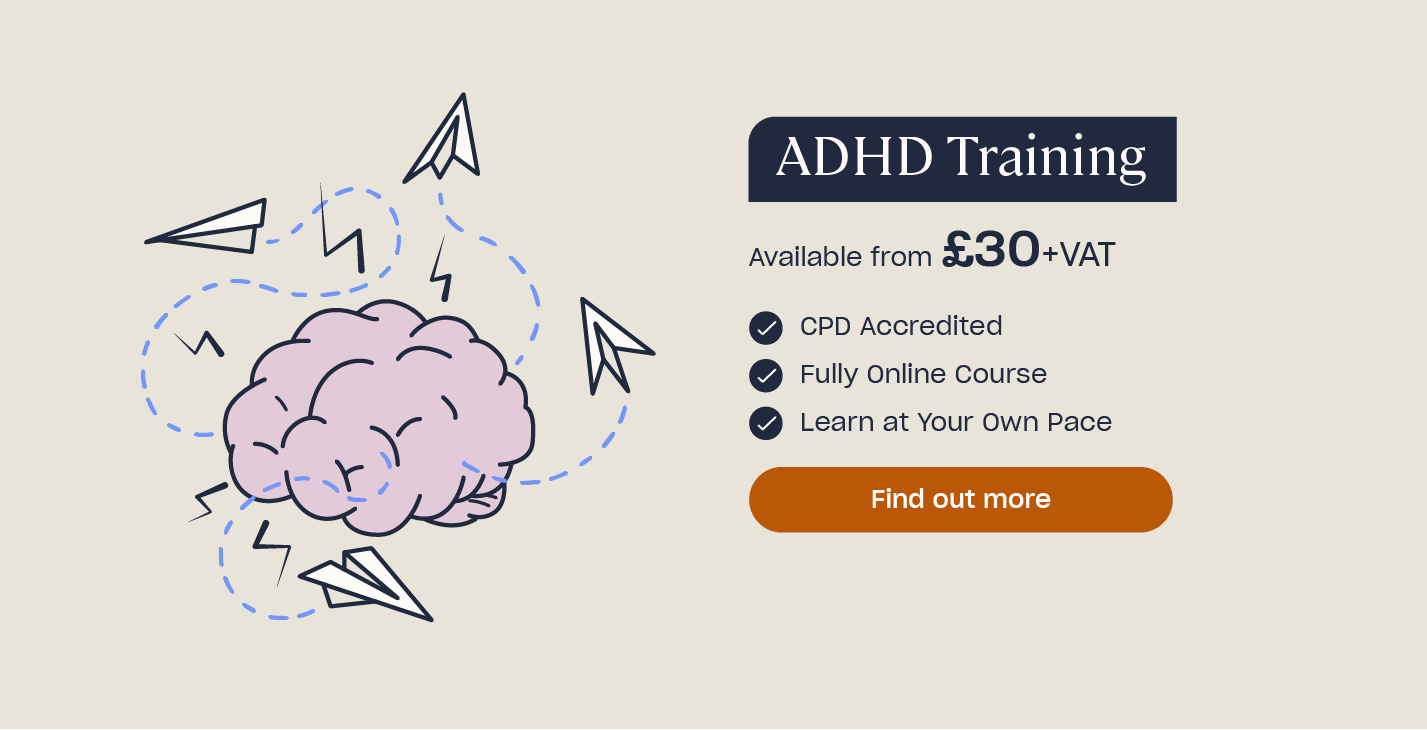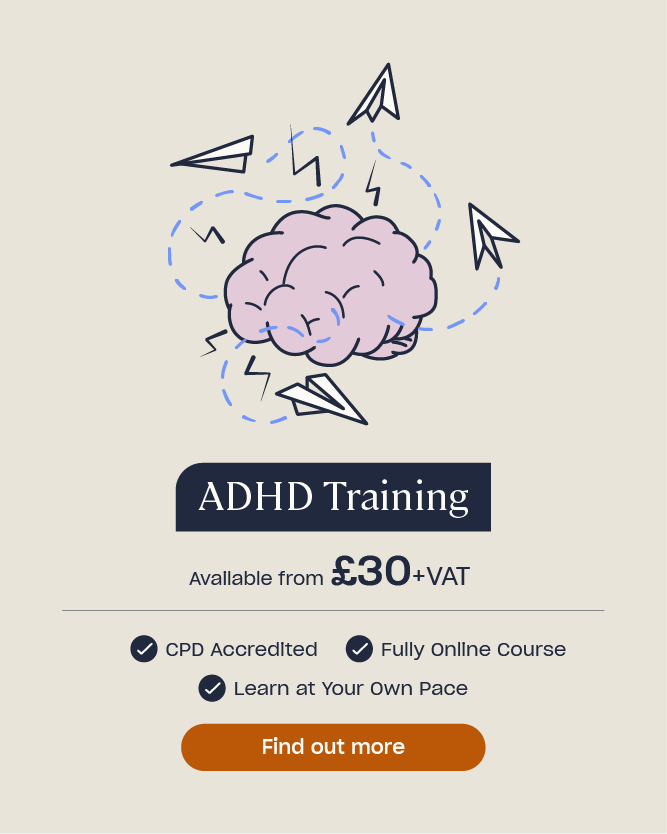ADHD Myths and Facts
Attention deficit hyperactivity disorder (or ADHD) is the name for a cluster of behaviours that impair social and cognitive functioning in everyday life. ADHD affects the parts of the brain that control attention, impulses, and concentration. It is thought to be genetic, but it can be influenced by environmental factors such as home life, school, and trauma in early childhood. Around 5-7% of children worldwide have ADHD, and it’s believed to affect around 1 in 30 students at school.
Sadly, there remains a lack of understanding about ADHD across many areas of society. It is this lack of awareness of ADHD behaviours that has perpetuated many untruths.
In this article, we will address four common ADHD myths. We will challenge each misconception with fact – in order to increase awareness of this common neurological difference.

Myths and Facts About ADHD
Misunderstandings around a condition can be damaging to both the individual and their families. Many people associate ADHD with poor behaviour alone and remain unaware that it is a medically recognised condition, experienced by both children and adults.
Let’s now look at some of the most common ADHD myths and confront them with ADHD facts.
Myth 1: Children with ADHD are Badly Behaved
There are very real and recognised neurological changes apparent within the brains of children with ADHD. These changes are neurodevelopmental differences, changing brain functioning and structure. ADHD impacts a child’s ability to self-regulate. Their organisation skills, working memory, time management, and self-awareness are all affected.
Many children with ADHD have delayed maturation. This means that developmentally they may be years behind their peers. They are often forgetful, so they may need regular reminders about behaviour and expectations. It is, therefore, unfair to blame the child for their behaviour.
When working with children with ADHD, it’s vital that we consider this maturation delay when dealing with any behaviour that challenges. If teachers and parents attempt to manage these behaviours through discipline alone, they are likely to be unsuccessful. Equally, if teachers disregard ADHD presentations as merely low-level behaviour, then they are not supporting the child to achieve the best academic, social, and personal outcomes.
Children with ADHD will benefit from a structured approach to their daily routines and a clear behaviour strategy, both at home and in school. Teachers must strive to ensure students receive access to high-quality teaching, alongside effective adaptations to it. These might include standing desks, access to a quiet space, and access to a laptop. By making these small adaptations to their classroom practice, teachers are providing children with ADHD the best opportunity to access the curriculum in its entirety.
You can find out more about how to support children with ADHD in the classroom here.
‘ADHD is a diverse disorder and not every young person or adult is the same. Every young person or adult with ADHD is unique in their own right and whilst there might be areas they find challenging, we must also celebrate their uniqueness and strengths.’
Professor Prathiba Chitsabesan, NHS England Associate National Clinical Director for Children and Young People

Myth 2: ADHD is Gender Biased
There is a common misconception that ADHD only affects boys. This is untrue.
Both males and females are more likely to have the combined ADHD type (a combination of the hyperactive and inattentive presentations), yet males are more likely to receive a diagnosis. Historically, females have been largely under-represented and understudied in clinical ADHD trials. As a consequence of this gender bias, the accurate diagnosis and treatment of females with ADHD is hindered. In the UK, we are still at the beginning of our journey into the world of ADHD for girls and women.
Girls are more likely than boys to display inattentive behaviours, which places them at risk of being underdiagnosed as these behaviours tend to be less physical or visible.
Girls with ADHD can have poor social skills, and they often experience low self-esteem and uncertainty about their abilities. As a result, girls with ADHD experience a higher incidence of depression and anxiety.
In contrast, boys are diagnosed two to three times as often as girls, and are much more likely to be diagnosed in early life, with their behaviours often being more obvious.
You can find out more about how ADHD presents itself in females here.

Want to know more about ADHD?
Our ADHD Awareness training will inform you about the three different ADHD presentations, and the impact ADHD can have on a child’s life, as well as comprehensive strategies that you can use to help them achieve their potential. You might also be interested in our SEND in the Classroom course.
Myth 3: ADHD in Adults Isn’t Real
Many children diagnosed with ADHD will have symptoms that continue in adulthood. However, diagnosing adults with ADHD can be challenging because psychologists are currently unsure about whether ADHD symptoms are the same in children and adults. (ADHD in adults is a largely under-researched area.)
As part of an adult diagnosis, a specialist will discuss the adult’s present symptoms. A diagnosis of ADHD cannot be confirmed unless those symptoms were present from childhood.
Adults who have ADHD may show behaviours that impact their daily life, such as:
- Poor performance and/or underachieving at work or in education.
- Dangerous driving.
- Struggling to maintain or make friendships.
- Difficulty maintaining healthy relationships with partners.
A GP will assess the patient’s symptoms and may refer them for an assessment if:
- They were not diagnosed with ADHD as a child and the symptoms began during childhood, and have been ongoing.
- Their behaviours are not associated with a mental health condition.
- The behaviours have a significant impact on everyday life.

Myth 4: ADHD is the Result of Poor Parenting
ADHD is not caused by poor parenting. It is, as we know, a neurological condition. ADHD is believed to be genetic, but it can be influenced by environmental factors such as home life, school, and trauma in early childhood.
Parents and carers of children with ADHD can support their child by setting meaningful and consistent routines at home. These can include:
- Limiting screen time in the hours directly before bed.
- Ensuring the bedtime routine is calm and relaxed, perhaps including a bath and a story.
- Promoting the benefits of natural sunlight as part of the morning routine (Dr Andrew Huberman, 2022).
- Creating an environment at home where the child can speak honestly and openly about their feelings, so that they feel empowered and confident when talking about their ADHD.
‘There is no such thing as ADHD children. Instead, there are children and young people with traits of ADHD. If we can try to understand how individuals with traits of ADHD interpret the world around them, we can nurture and support them to make sure they fulfil their potential, both in their learning, and in life.’
ADHD and neurodiversity expert, Fintan J O’Regan

While ADHD can pose difficulties, impairments, and challenges, having ADHD can also bring new perspectives. Children with ADHD may not possess the same learning and behaviour skill set as their peers, but they may be much more advanced in other ways, as can their adult counterparts. Reframing our thinking to celebrate neurodiversity, or naturally occurring differences in our brains, such as ADHD, will help to build more awareness and understanding of the condition and dispel the many myths surrounding it.
Further Resources:
- ADHD Awareness Training
- How does ADHD Differ in Females?
- SEND in the Classroom Course
- Managing ADHD in the Classroom: Teaching Strategies and Tips
- Recognising Signs of ADHD in Children
- Sensory Overload in Children
- Sensory Overload in Adults











